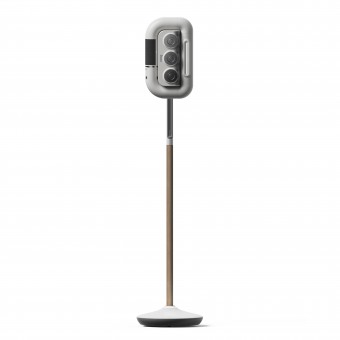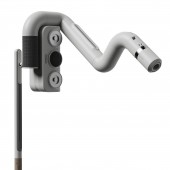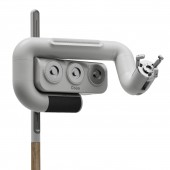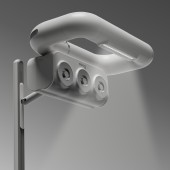DESIGN NAME:
Dooo
PRIMARY FUNCTION:
Module Integrated Robotic Arm
INSPIRATION:
Dooo is a robotic arm for single-person households. Single-person households often face difficult situations to do alone in their free daily lives. In this situation, they imagine, "If I had eyes on the back of my head," "If I had another arm." and "If things had limbs,". Dooo makes this imagination a reality. The gripper serves as another eye and arm of the user, and the module combined to the arm becomes an object with limbs. It helps with things that are hard to do alone.
UNIQUE PROPERTIES / PROJECT DESCRIPTION:
Dooo is equipped with basic functions of Bluetooth speaker, lighting, and gripper, and stores three modules in the body: dust remover, dryer, and holder. The gripper serves as another eye and arm of the user, and the module combined to the arm becomes an object with limbs. Dooo with an automatic module replacement mechanism is automatically combined with the module user wants and automatically stored in the body when it is out of use.
OPERATION / FLOW / INTERACTION:
It can be manipulated through an app connection, and it can also be moved through voice commands with voice recognition technology.
PROJECT DURATION AND LOCATION:
The project started in March 2022 and finished in June 2022 in Kookmin university
|
PRODUCTION / REALIZATION TECHNOLOGY:
The housing of the overall body is made of durable plastic with warm gray, and wood material is used on the stand part to match the interior design of the house. In addition, although it is a slim design to reduce taking up space, the robot's center of gravity moving device technology has been applied to the pedestal to increase the realizability of this design. Since the center of gravity of the pedestal moves according to the movement of the robot arm, the user can use it stably without shaking or falling.
SPECIFICATIONS / TECHNICAL PROPERTIES:
300mm(W) X 300mm(D) X 1400mm(H)
TAGS:
Robot, Robotic arm, Single-person household, Module
RESEARCH ABSTRACT:
In order to design a robot for a single-person household, I observed the life of a single-person household and wrote a scenario of what kind of activities they do in what space in the house.
In that scenario, I found things that they couldn't do or were hard to do by themselves, and I wanted to make the core items into modules.
In addition, considering the size of the house where a single-person household lives and the environmental interior
I designed it.
CHALLENGE:
I didn't know about the life of single-person households because I had never lived alone. Because it was difficult to directly observe or experience the life of single-person households, I was able to observe their lives indirectly through watching their vlogs and interviewing them. I also had a hard time coming up with an automatic module replacement mechanism that would reduce the hassle of users having to manually replace and store modules. To find a way to take the module out of the body and store it back with the limited radius and angle of movement of the robot arm, I tried and tested many simulations using modeling tools. Finally, I was able to find the most efficient module location and to design the mechanism with the structure of a sliding cover of the body and a robot arm that can adjust the length.
ADDED DATE:
2024-02-17 02:04:19
TEAM MEMBERS (1) :
IMAGE CREDITS:
Eunsoo Lee, 2023.
|










